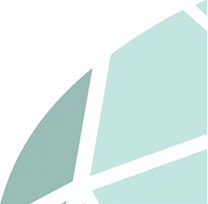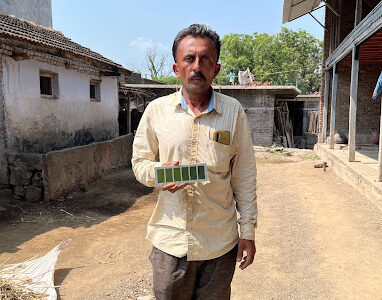Leaf Color Charts to reduce nitrous oxide emissions and increase farmer income in cotton production through the efficient use of nitrogen fertilizer
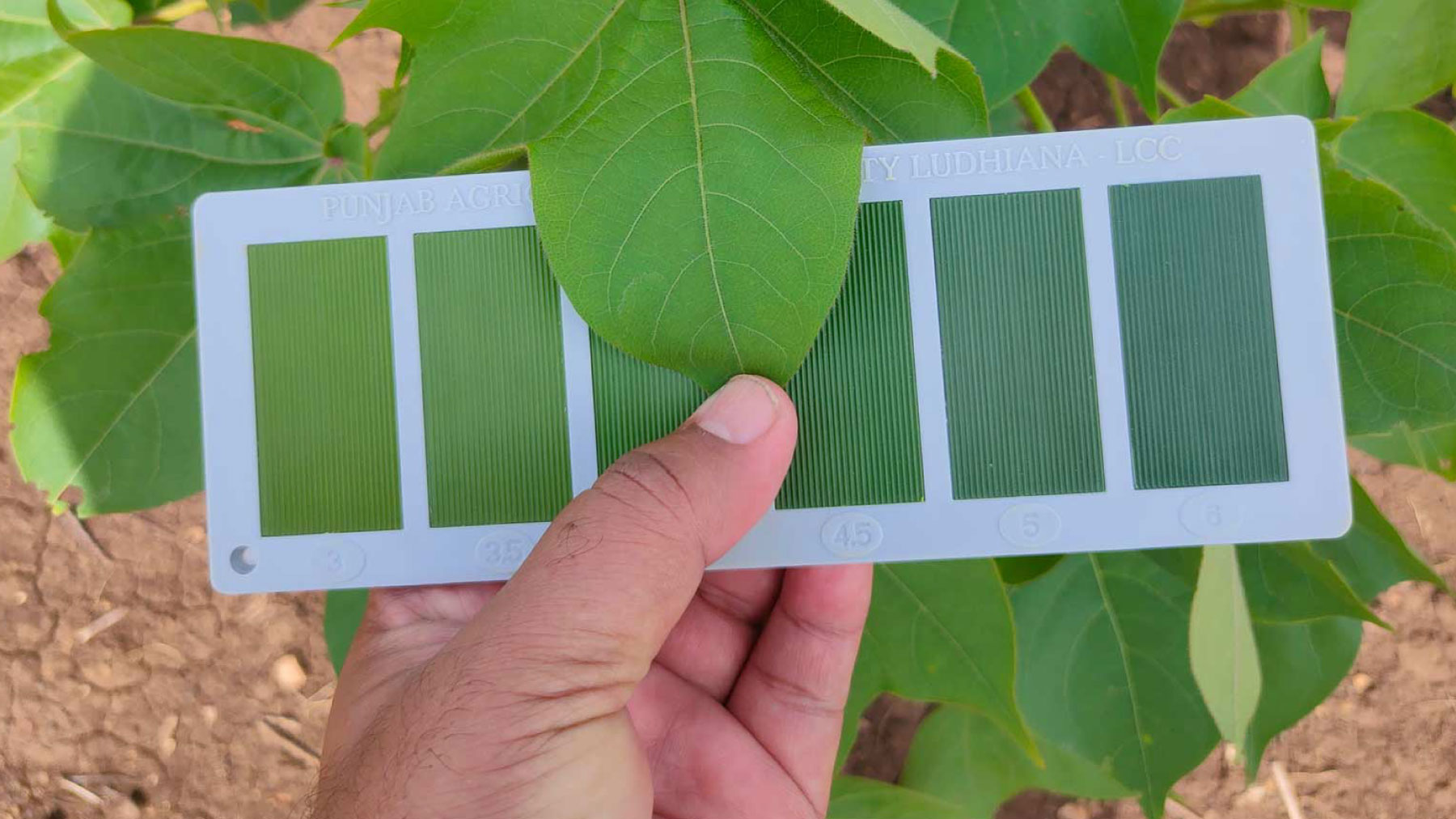
India
2022
Leaf Color Chart opportunity overview
A Leaf Color Chart (LCC) is a user-friendly decision support tool to help farmers assess plants’ nitrogen needs in real time and optimize fertilizer use. The tool is a plastic strip resembling a ruler, featuring multiple panels with varying shades of green that the farmer can match to their crop leaves and find optimal nitrogen application rates according to the match. The primary motivation for scaling LCCs draws from the evolving literature that real-time feedback on behavior and convenient rule-of-thumb devices can increase individuals’ agency in optimizing their choices (Gans et al., 2011;Redd et al., 2012).
However, LCCs are not widely available and have limited use among farmers in South Asia. Cotton is one of India’s most important commercial crops and requires several fertilizer applications, creating an ideal opportunity for LCC intervention. Urea, the primary nitrogen fertilizer in India, is heavily subsidized, accounting for about 70% of India’s total fertilizer subsidies. With increasing global urea prices, the Indian government is also spending significantly more on fertilizer subsidies. The subsidy makes it more affordable for farmers to use urea, which can lead to overuse. Excessive use of urea can have negative environmental consequences, including increased nitrous oxide emissions, 273 times more potent than carbon dioxide emissions. Furthermore, excess nitrogen can seep into the ground and water bodies, negatively impacting human health and ecosystems.
Empirical evidence from real farms in Bangladesh demonstrates that LCC adoption by rice farmers reduced urea/nitrogen use by 8% without compromising yields and, as a consequence, can increase farmers’ profits by reducing their costs (Islam and Beg, 2020). That study assessed LCCs in rice, but LCCs can be applicable across different crops as long as they are appropriately calibrated and validated. Building on the model of rice LCCs created by scientists at the International Rice Research Institute (IRRI), researchers have also developed LCCs for cotton crops which can effectively identify the nitrogen level of cotton plants (Shankar et al., 2019).
Farmers in low and middle-income countries encounter numerous obstacles in adopting optimal farming practices, including nitrogen fertilizer application. Dynamic local conditions influence their decisions, and they often lack accessible and actionable information to make appropriate adjustments. With access to LCCs, farmers can determine, in real-time and with ease, the right amount of fertilizer to apply and reduce greenhouse gas emissions resulting from excess nitrogen fertilizer application. Increased efficiency of nitrogen fertilizer use can also save direct costs to the farmer and the government in contexts of high urea subsidies.
PxD’s experience with Leaf Color Charts
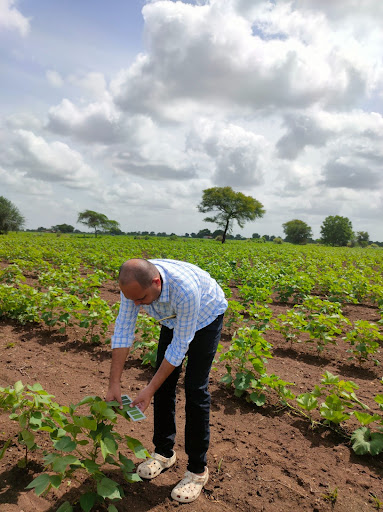
In 2022, PxD implemented a pilot project to distribute LCCs to cotton farmers in Gujarat, India with a light-touch intervention to encourage their use. The objective was to explore how to increase the availability and usefulness of LCCs in this context to improve farmer’s decision-making on appropriate nitrogen use. With a sample of over 800 cotton farmers, PxD randomly selected 400 farmers to receive LCCs. Among these, close to none were familiar with an LCC, and none had previously used it; but more than half reported using the tool and shared positive feedback about its use after the pilot.
The end-of-season survey provided strong support for the theory of change that the intervention substantially reduced the use of nitrogen fertilizers without reducing yields, and resulted in notable model-estimated greenhouse gas emissions reductions. The farmers who PxD randomly selected to receive LCCs, on average, reported applying 35% less nitrogen fertilizer than those who did not receive LCCs. With technical assistance from researchers at IRRI, PxD calculated the greenhouse gas emissions of cotton producers in the study using the Cool Farm Tool and estimated that farmers who received LCCs produced 0.3 mt CO2 eq GHG emissions per hectare less than farmers who did not receive an LCC. Based on PxD’s previous data on the average cost of production of cotton in Gujarat (Cole & Fernando, 2021), PxD estimates farmers will experience at least a 4.3% decrease in their cost of production per acre if they receive an LCC compared to farmers who do not receive an LCC.
We observed that distributing LCCs through agro-dealers and peer farmers, accompanied by a context-specific instruction booklet, can be cost-effective and scalable. These channels resulted in comparable findings of self-reported use of the tool, accurate recall of LCC usage instructions, and engagement with the LCC digital advisory as opposed to the higher cost approach of PxD’s staff directly distributing LCCs and training farmers. We are presently using these insights to inform implementation activities for scaling up LCC distribution among cotton farmers in India.
PxD’s Leaf Color Chart scaling in action
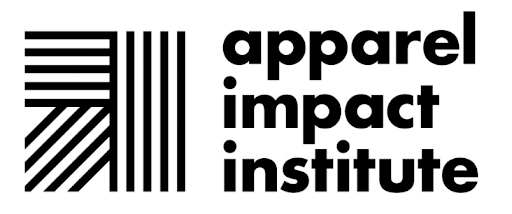
In 2023, PxD began efforts to widely scale up distribution of LCCs among cotton farmers in India, with generous support from the Apparel Impact Institute. The objective of this funding is to lessen the environmental impact of the clothing industry by tackling the inefficient use of nitrogen fertilizer in cotton farming, a major contributor to greenhouse gas emissions during cotton production.
We are collaborating with partners who can use their existing extension infrastructure to deploy LCCs at scale and train farmers to use them effectively. To achieve this, PxD will provide technical assistance to the scaling partners in planning the distribution of the LCC program, developing robust monitoring systems, and managing logistical challenges. We will apply our experience from previous successful Build-Operate-Transfer (BOT) models where PxD provides in-depth support in creating and operating a program in collaboration with a partner for the first few years and then wholly transfers the program back to the partner to continue to scale. We will utilize our proficiency in using key principles of human-centered design to support the partners in LCC design and customization to the local context, teach their extension agents on how to train the farmers on the appropriate use of LCCs and design a digital advisory service on the LCC. We will apply our unique research expertise to conduct rapid qualitative testing of program attributes, iterating them based on the learnings and monitoring key metrics of LCC distribution and digital engagement to provide insights to scaling partners on the effectiveness of the program.
Testimonial
“I received LCC from my village’s agro dealer. He trained me on how to use the LCC. I cultivate cotton in 60 bigha land. I used LCC last year on my crops. Earlier I used to apply up to 10 kgs of urea per bigha, but after using LCC I applied 5 kg per bigha, thus saving 5 kg urea per bigha i.e. 300 kg. This helped me save 2,000 INR on urea and another 2,000 INR on labor cost, making it a total of 4,000 INR. I did not face any reduction in yield after reducing urea usage. I still have LCC and will use it next year. I cultivate cotton in a labor partnership arrangement where I give a certain percentage of output to my labor partner. Laborers are in favor of using urea on the higher side as they fear yield loss, but I used LCC myself and convinced them to reduce urea usage. I have also tried nano urea in my field.”
PxD exploring future work on Leaf Color Charts
PxD is actively seeking funders and partners to carry out future work to expand the evidence base on physical LCCs and explore opportunities to create low-cost, easy-to-use digital tools for precision nitrogen management.
Expanding the evidence base on physical LCCs
PxD’s 2022 pilot contributed to the sparse literature on LCC impacts on farmer fertilizer management in the cotton value chain. However, PxD did not design it to test the impact of the intervention formally, but rather to generate suggestive insights on farmers’ interests, their barriers to using LCCs, potential impact on their outcomes, and elicit their feedback. Given the promising results of the cotton LCC pilot, we would like to conduct a rigorous evaluation to precisely estimate the impact and cost-effectiveness of LCC delivery interventions to inform policymakers’ decision on scaling LCCs in the long-run. Specifically, we’d like to 1) estimate the impact of LCCs on urea use and associated production costs and 2) estimate the cost-effectiveness of different LCC distribution methods.
Exploring opportunities for digital tools for precision nitrogen management
Evidence indicates that physical LCCs are a promising, low-cost intervention to support farmer-led decision-making and reduce excessive nitrogen use in India. We can further reduce the cost of providing farmers with precision nitrogen management if we can develop an easy-to-use digital tool that an implementer can disseminate at negligible costs. In parallel to scaling up the most cost-effective distribution channels for physical LCCs, PxD is actively looking for funders and technical partners to develop a digital precision nitrogen management tool that can leverage the rapidly increasing smartphone ownership among farmers in India.
Downloads & Links
Make an Impact Today

